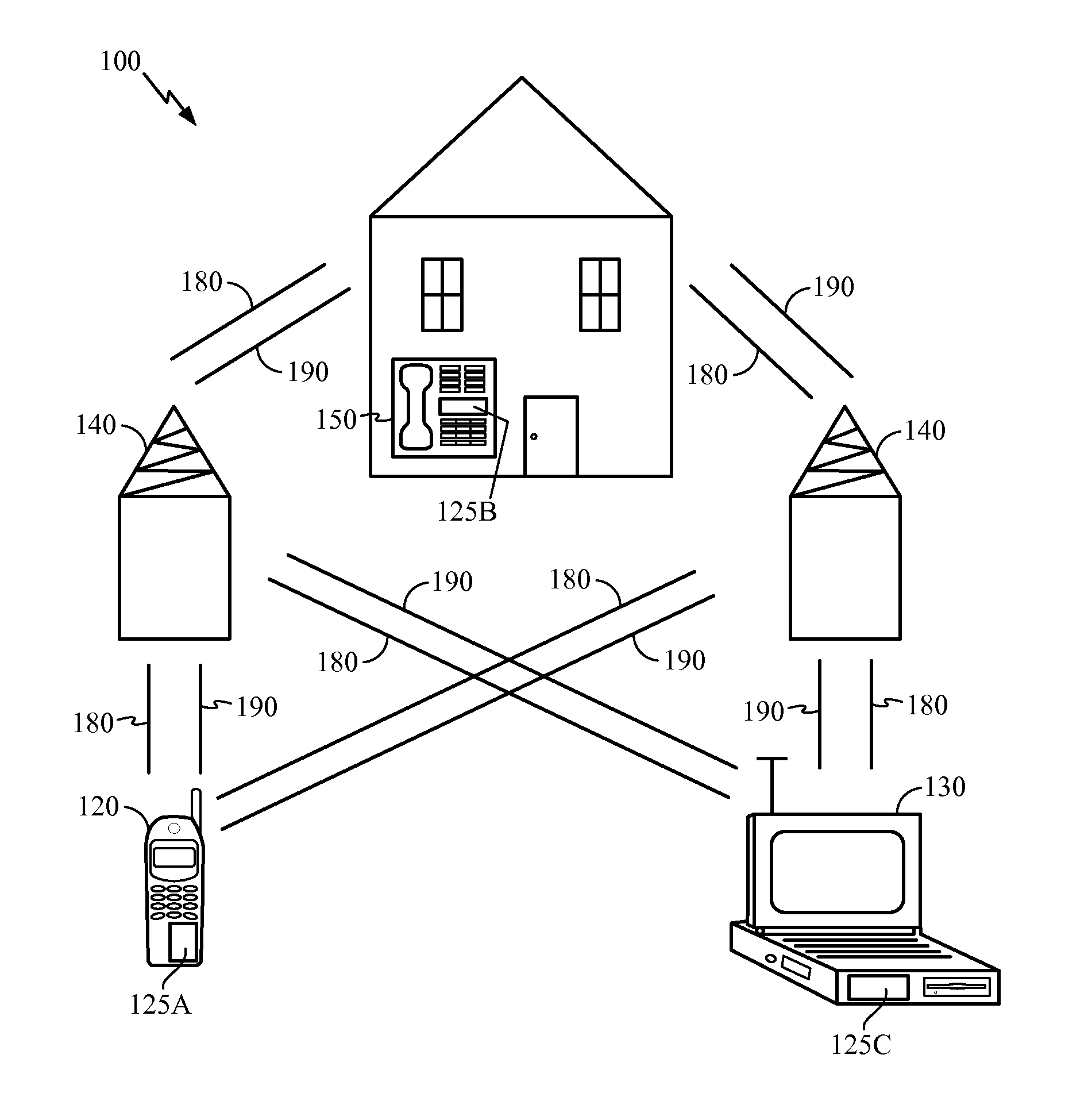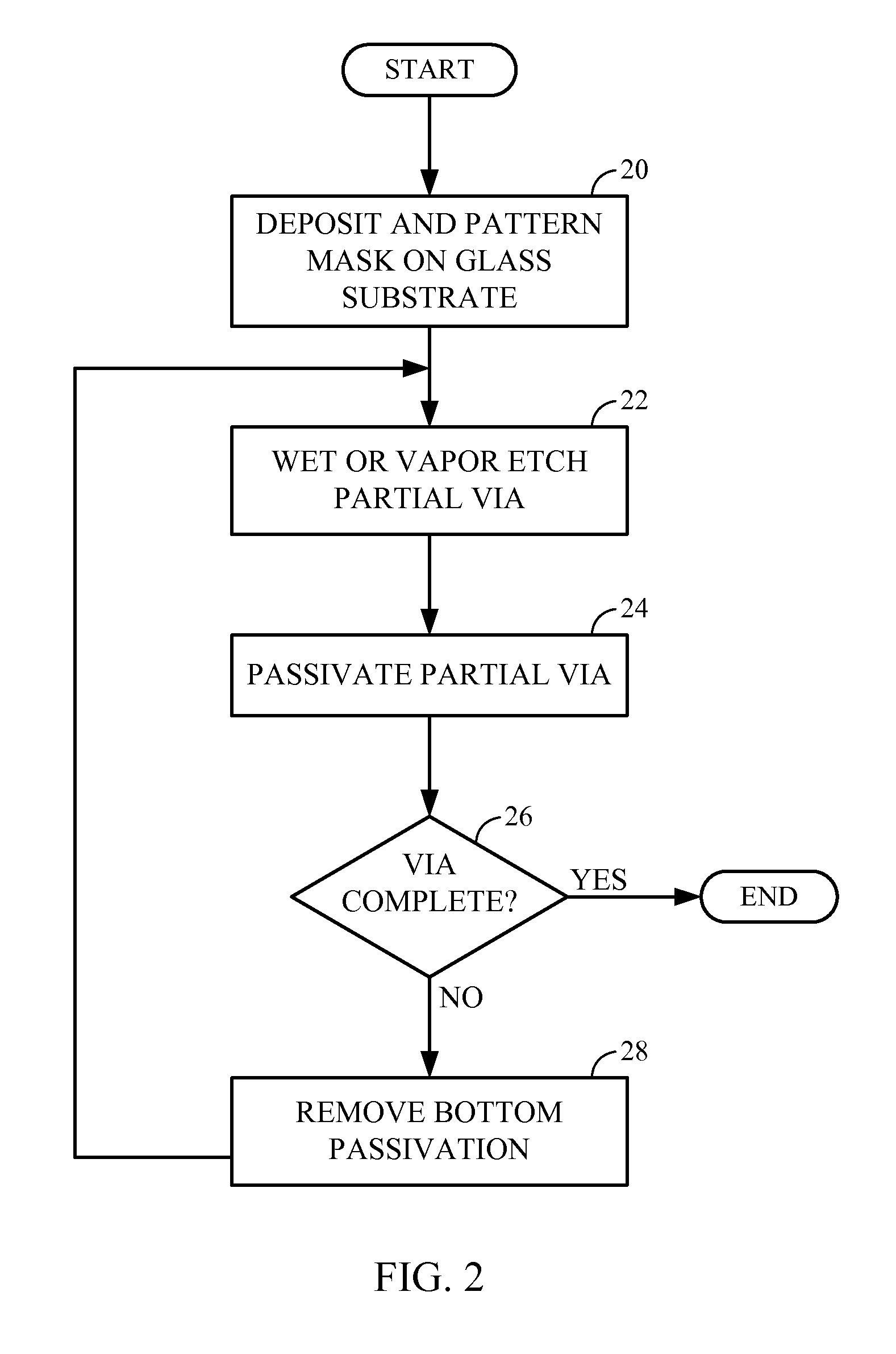Through Glass Via Manufacturing Process
- Summary
- Abstract
- Description
- Claims
- Application Information
AI Technical Summary
Problems solved by technology
Method used
Image
Examples
Embodiment Construction
[0014]An improved process for manufacturing through glass vias within a glass substrate is explained. This low cost process has a relatively quick etch rate, and results in vias with a relatively small pitch and a relatively high aspect ration.
[0015]Referring now to FIGS. 2-6, an exemplary process for manufacturing a through glass via will be discussed.
[0016]At block 20, a photoresist mask 32 is deposited on a relatively thick glass substrate 30. In one embodiment the glass substrate 30 is approximately 200 microns thick. The photoresist mask 32 is patterned to create openings 34 where the vias will be fabricated. The patterned photoresist becomes a hard mask 32 for the upcoming non-plasma etch. Exemplary materials for the photoresist include silicon nitride (SiN), silicon carbide (SiC), and the like.
[0017]At block 22, a vapor of an oxide etch chemical, or a wet oxide etch chemical is applied in a chamber containing the substrate 30 to create a shallow partial via 40. In one embodim...
PUM
| Property | Measurement | Unit |
|---|---|---|
| Thickness | aaaaa | aaaaa |
| Etch rate | aaaaa | aaaaa |
| Aspect ratio | aaaaa | aaaaa |
Abstract
Description
Claims
Application Information
 Login to View More
Login to View More - R&D Engineer
- R&D Manager
- IP Professional
- Industry Leading Data Capabilities
- Powerful AI technology
- Patent DNA Extraction
Browse by: Latest US Patents, China's latest patents, Technical Efficacy Thesaurus, Application Domain, Technology Topic, Popular Technical Reports.
© 2024 PatSnap. All rights reserved.Legal|Privacy policy|Modern Slavery Act Transparency Statement|Sitemap|About US| Contact US: help@patsnap.com










